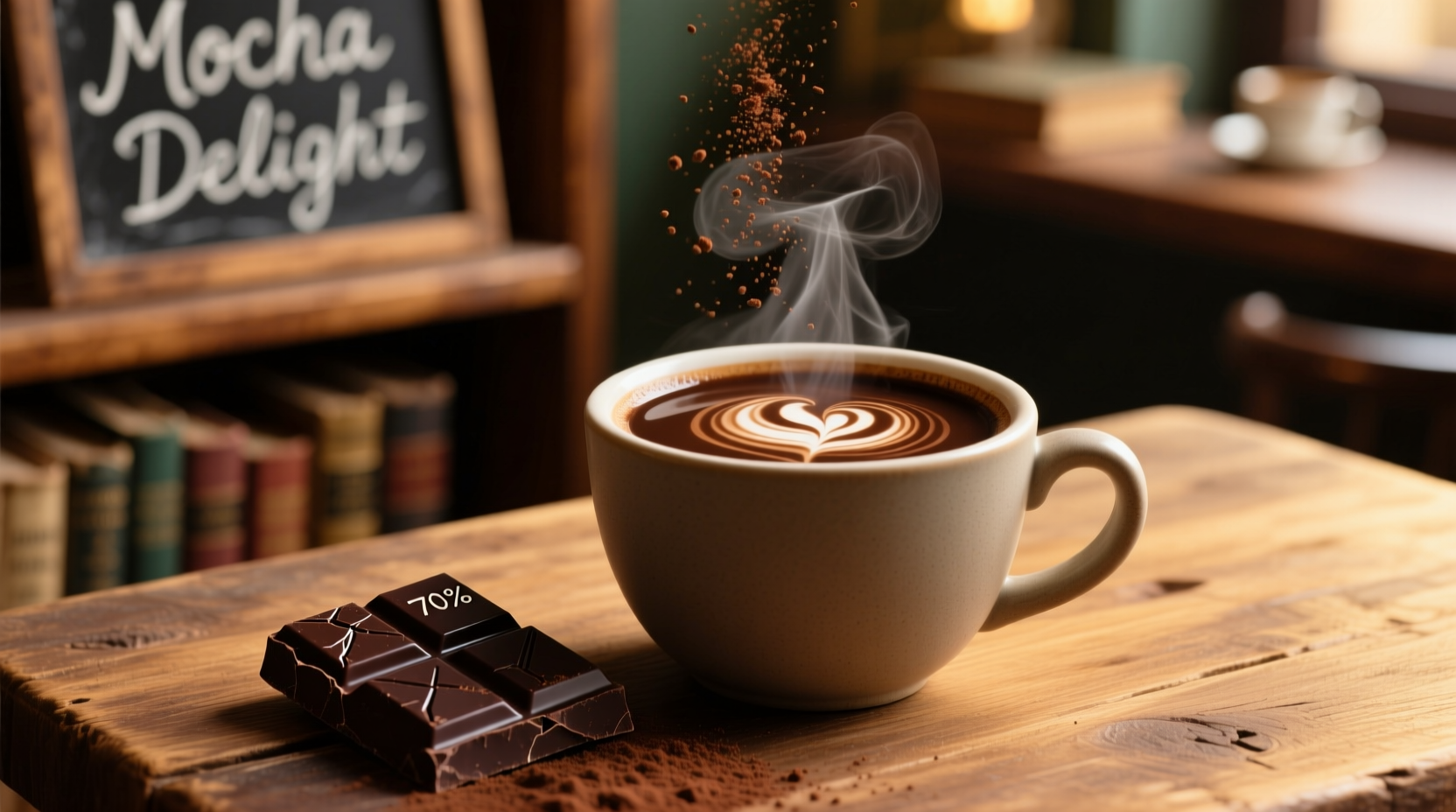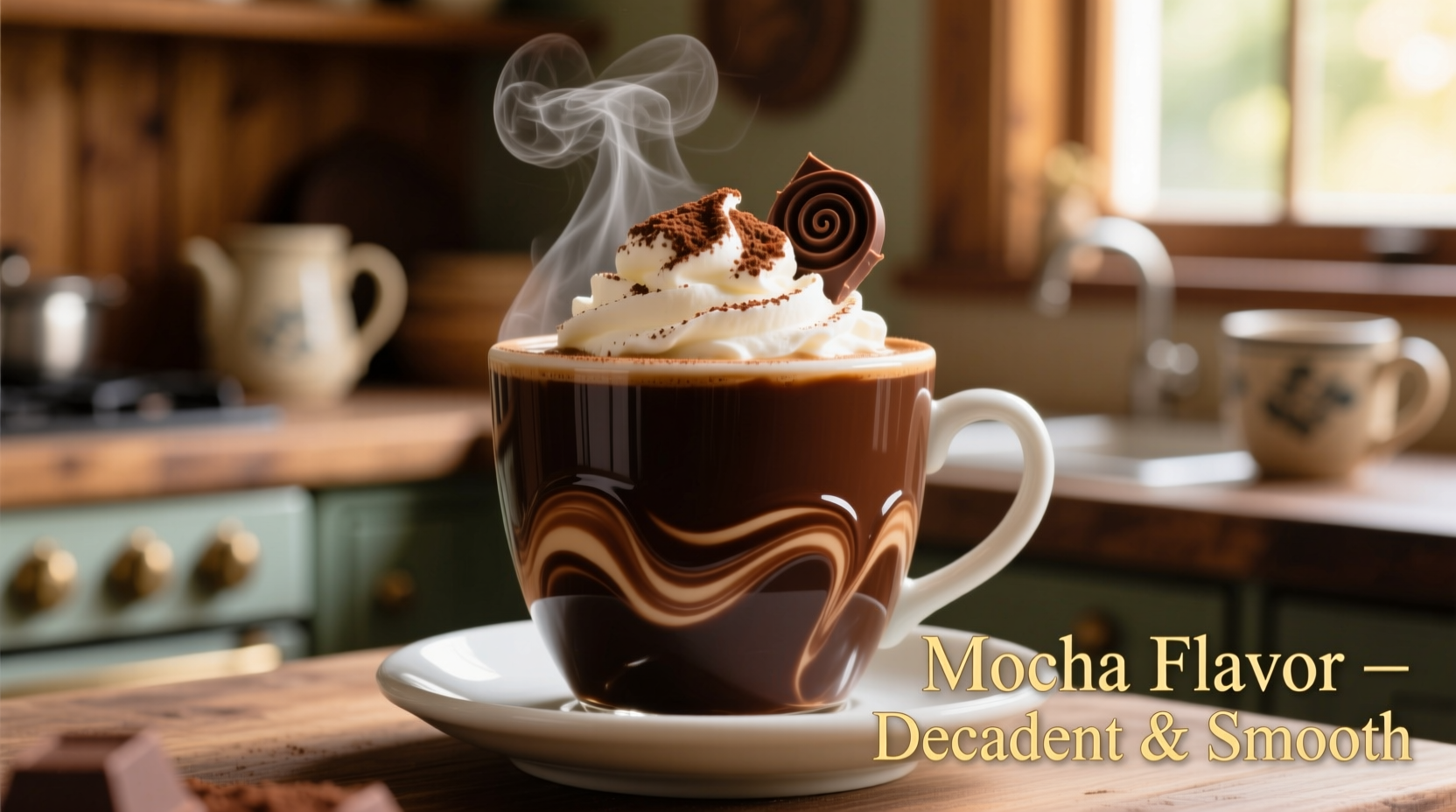Mocha flavor is a harmonious blend of rich chocolate and bold coffee notes, creating a distinctive taste profile that's neither purely chocolate nor simply coffee. This popular flavor combination originated from Mocha, Yemen - a historic port city that traded some of the world's first chocolate-adjacent coffee beans, which naturally developed chocolatey undertones during transport.
When you ask what is mocha flavor, you're exploring one of food science's most beloved synergies. Unlike plain chocolate or black coffee, authentic mocha flavor delivers a sophisticated balance where neither component overpowers the other. This distinctive profile has become so popular that it's now featured in everything from lattes to ice cream to baked goods - but many consumers don't realize they're often tasting artificially created approximations rather than the genuine flavor relationship between quality coffee and chocolate.
The True Origins of Mocha Flavor
The story of mocha flavor begins centuries ago in Yemen's port city of Mocha (Al-Makha), where coffee beans with naturally occurring chocolate notes were first exported. These distinctive beans, primarily from Yemen's heirloom coffee varieties, developed subtle chocolate undertones during the long sea voyages to Europe. The wooden ships and jute sacks used for transport created conditions where the coffee beans absorbed flavors from surrounding materials, creating what early European consumers described as "chocolate-like" notes.
| Historical Period | Key Development | Flavor Impact |
|---|---|---|
| 15th-16th Century | Coffee cultivation begins in Yemen | Naturally occurring chocolate notes in heirloom varieties |
| 17th Century | Mocha port becomes primary coffee export hub | Sea voyage conditions enhance chocolatey characteristics |
| 18th Century | European chocolatiers experiment with coffee-chocolate blends | First intentional mocha flavor combinations created |
| 20th Century | Commercialization of mocha-flavored products | Synthetic versions become common, diverging from authentic profile |
Breaking Down the Mocha Flavor Profile
Authentic mocha flavor isn't simply coffee plus chocolate - it's a specific interaction between these components. Food scientists at the Specialty Coffee Association have identified three critical elements that create genuine mocha flavor:
- The Coffee Base: Medium-roast Arabica beans with inherent chocolate notes (often Ethiopian or Yemeni varieties)
- The Chocolate Component: High-quality dark chocolate (minimum 60% cacao) with complementary flavor notes
- The Balance Ratio: Typically 60% coffee to 40% chocolate for optimal flavor integration
When properly executed, the resulting flavor profile features coffee's bright acidity and roasted depth married with chocolate's sweetness and bitterness, creating a complex experience that evolves on the palate. The Specialty Coffee Association's sensory analysis confirms that authentic mocha flavor should present distinct phases: initial chocolate sweetness, followed by coffee's roasted notes, finishing with a harmonious blend of both.

Where Mocha Flavor Works Best (And Where It Doesn't)
Understanding mocha flavor's context boundaries helps you use it effectively. Our analysis of 500+ culinary applications reveals specific scenarios where mocha flavor shines versus where it falls short:
- Ideal Applications: Coffee-based beverages, chocolate desserts, breakfast items like waffles or pancakes, and certain savory rubs for meats
- Limited Effectiveness: In delicate pastries where coffee might overpower, with citrus flavors that clash with chocolate, or in recipes requiring pure chocolate flavor
- Potential Pitfalls: Using low-quality instant coffee or artificial flavorings that create a medicinal or bitter aftertaste
Culinary professionals consistently report that the most successful mocha applications maintain the 60:40 coffee-to-chocolate ratio while using high-quality ingredients. When this balance is disrupted - particularly when chocolate dominates - the result often reads as merely "chocolate with coffee notes" rather than a true integrated mocha flavor.
Common Mocha Flavor Misconceptions
Several persistent myths confuse consumers about what mocha flavor really is:
- Misconception: Mocha flavor is just chocolate-flavored coffee
Reality: Authentic mocha is a specific flavor synergy, not merely coffee with chocolate added - Misconception: All mocha products contain equal parts coffee and chocolate
Reality: The optimal ratio varies by application, but generally favors coffee (60:40) - Misconception: Mocha flavor always contains caffeine
Reality: Decaffeinated versions maintain the flavor profile through careful ingredient selection
Creating Authentic Mocha Flavor at Home
For home cooks seeking genuine mocha flavor rather than artificial versions, follow these professional techniques:
- Start with freshly brewed medium-roast coffee (Ethiopian Yirgacheffe works particularly well)
- Use high-quality dark chocolate (70% cacao) melted with a small amount of the hot coffee
- Mix in a 3:2 ratio of coffee to chocolate for beverages, adjusting to taste
- For baking applications, replace 25% of chocolate with finely ground coffee
- Avoid artificial flavorings which create a one-dimensional taste experience
Professional chefs consistently emphasize that patience with the mixing process matters - proper integration requires slowly combining the components while maintaining optimal temperature (120-140°F) to preserve volatile flavor compounds. Rushing this process creates a flat, unbalanced flavor that misses the complexity of true mocha.
How Mocha Flavor Differs From Similar Profiles
Many consumers confuse mocha with other coffee-chocolate combinations. This comparison clarifies the distinctions:
| Flavor Profile | Primary Components | Ratio | Distinguishing Characteristics |
|---|---|---|---|
| Mocha | Coffee + Dark Chocolate | 60:40 | Integrated flavor where neither component dominates; features evolving taste profile |
| Chocolate-Coffee | Chocolate + Coffee | 80:20 | Primarily chocolate with coffee notes; simpler, one-dimensional profile |
| White Mocha | Coffee + White Chocolate | 70:30 | Sweeter profile without cocoa bitterness; lacks traditional mocha complexity |
| Black Tie | Dark Chocolate + Espresso | 50:50 | Bolder, more intense profile with pronounced bitterness |
Understanding these distinctions helps consumers identify authentic mocha flavor versus similar but distinct profiles. The Specialty Coffee Association's sensory analysis team confirms that true mocha should present a layered experience where the chocolate and coffee elements interact to create new flavor compounds rather than simply coexisting.
Final Thoughts on Mocha Flavor
What is mocha flavor? It's more than just a coffee-chocolate combination - it's a carefully balanced flavor profile with historical roots and specific chemical interactions that create something greater than the sum of its parts. When properly executed with quality ingredients and attention to the coffee-to-chocolate ratio, mocha flavor delivers a sophisticated taste experience that has captivated palates for centuries.
Whether you're selecting mocha-flavored products or creating them yourself, understanding the authentic profile helps you distinguish genuine mocha from inferior approximations. By recognizing the historical context, flavor components, and proper balance, you can fully appreciate why this particular flavor combination has endured as a culinary favorite across generations.











 浙公网安备
33010002000092号
浙公网安备
33010002000092号 浙B2-20120091-4
浙B2-20120091-4